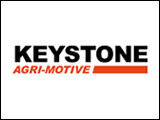
The Hidden Valley Colony took the Grand Champion prize for the best hog carcass at this year Hog and Poultry Days in Winnipeg.
Hidden Valley Colony of Austin took the top prize at the 2008 Manitoba Hog and Poultry Days Pork Quality competition in Winnipeg recently. The 2008 Manitoba Hog and Poultry Days Pork Quality Competition attracted 52 entries from across the province, down just slightly from previous years.
Exhibitors of the top 10 carcasses shared a total of approximately $27,000 in cash awards, half of which in some cases, and all in others, went to the charity of the winner’s choice along with trophies.
Rose Valley Colony of Carman took second place carcass and Starlite Colony of Starbuck exhibited the third place entry.
The organizing committee, together with the producers who entered, donated all 52 carcasses to Winnipeg Harvest for distribution to food banks throughout Manitoba, especially thoughtful during the holiday season.
Dave Maendel of the Hidden Valley Colony that showed the Grand Champion was pretty excited right after the trophy presentation, to the point of not quite knowing what to say. However, this shows how much stock producers put into this unique competition.
The colony runs a 1,200 sow, farrow to finish operation marketing 23,000 pigs a year.
“We figured we had won,” said Maendel after catching his breath. “I mark all the hogs and I told the boys, this is the pig we will enter in the competition. We won’t even have to probe on this one because he will be the one who will win.”
It takes time to choose the right one. They start to check three days before the show to pick out the animals they think may have a chance to win.
When asked how he knew it was the one, Maendel said, “Because I saw the loin. I saw the thickness on his loin. You don’t even have to probe. I mean, you can put two fingers in here.”
Jason Care, with Manitoba Hog Grading Inc, one of this year’s judges says they set the guidelines for the competition in consultation with exhibitors and reflect the demands of the market.
“Usually we do it in the summer time and they set the guidelines in which they would like to see and what they feel would be the best hog,” said Care. “Obviously it’s a market hog that has good marbling, a lower back-fat, a large loin eye.”
He said they tweak it over the years to customize it to what the competition demands, an industry standard to what the highest demand is for the hogs at the time. It slowly changes and it changes with countries of origin as well.
“We have different standards for different countries which look for different aspects of the hogs,” said Care. “Canada is well known, especially for our higher quality of hogs. A lot of genetics, especially in Manitoba, have been introduced to get these hogs narrowed down to the perfect market hog that we would like to see.”
Bob McKay of McKay Genstat Consulting in Brandon, last year’s judge in the Brandon carcass competition said it is important to remember producers sell pork, not pigs.
“You don’t want the carcass totally devoid of fat. You want a decent level of fat. Depending on the pig, 10 millimeters might be too much or too little. If it doesn’t bond well with the muscle it does create problems,” said McKay. “You want a nice fat cover, so when somebody’s cutting a pork chop for example, the fat and the loin don’t separate. You want to have a nice color fat so that it’s attractive in the grocery store and the muscle, you want it a little darker than the pink that we’re so used to because a darker pork chop retains water, it’s a little juicier and it actually tastes really darn good.”



